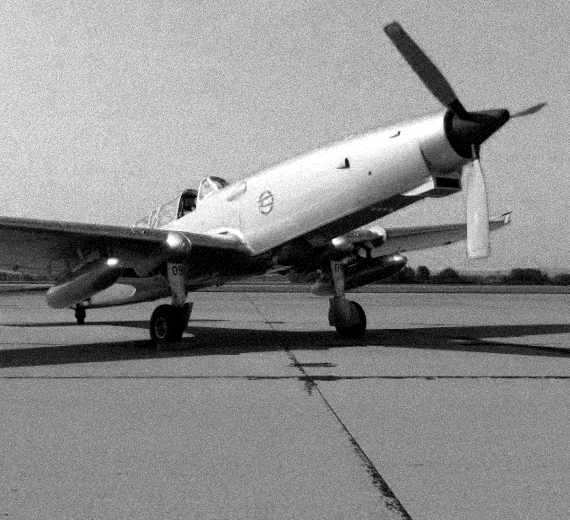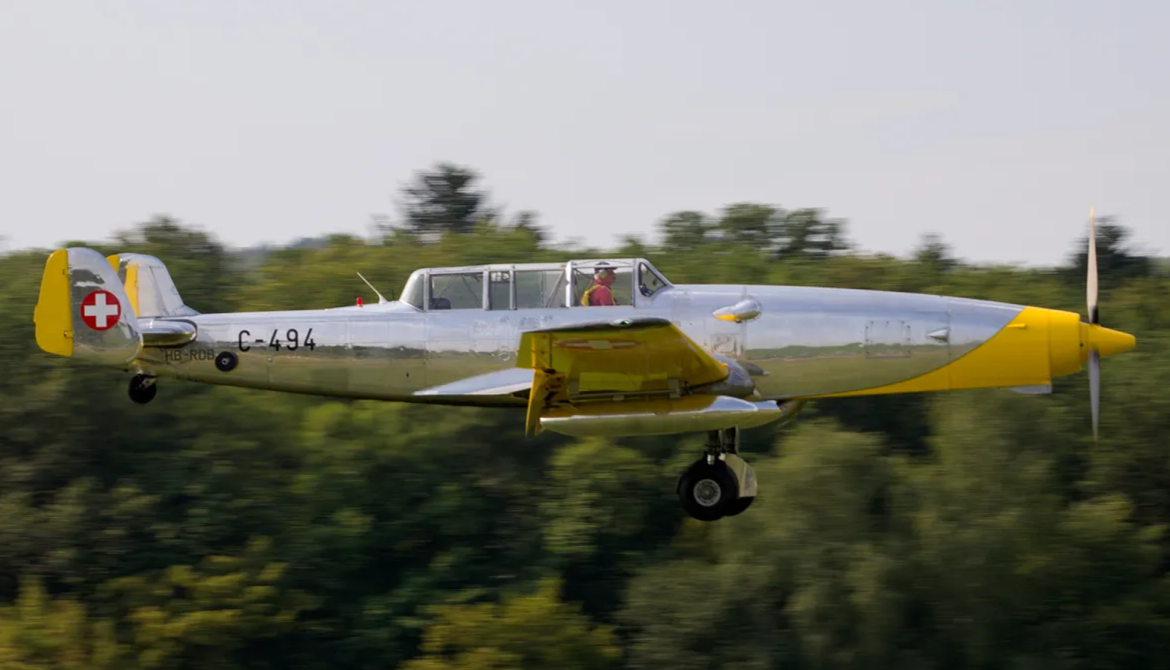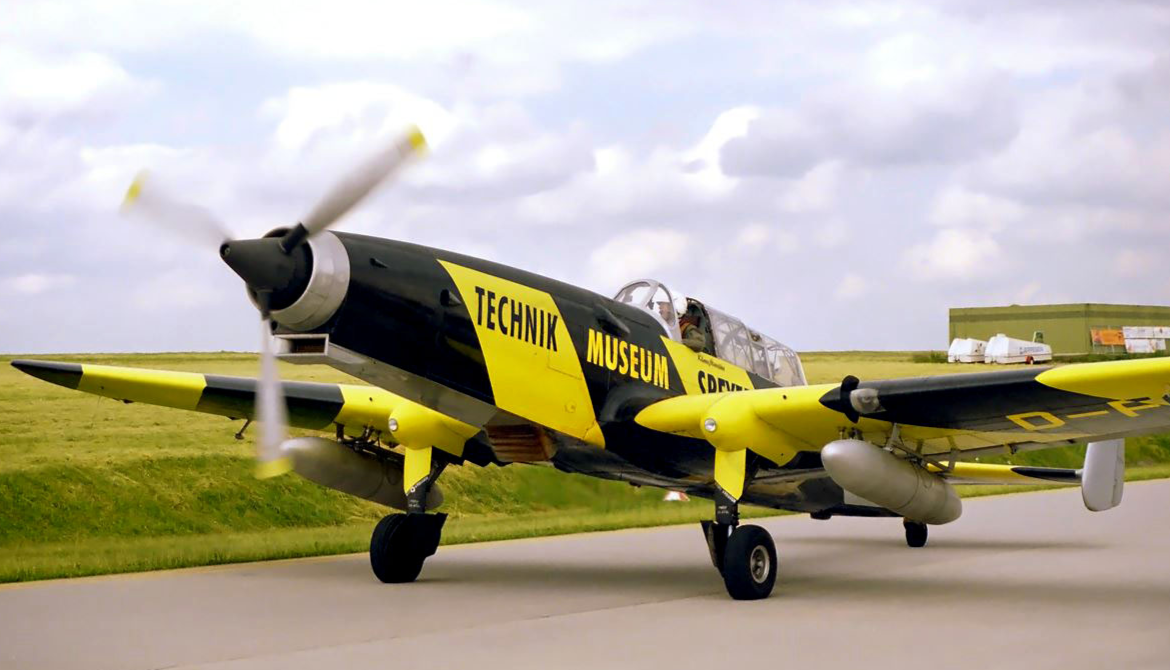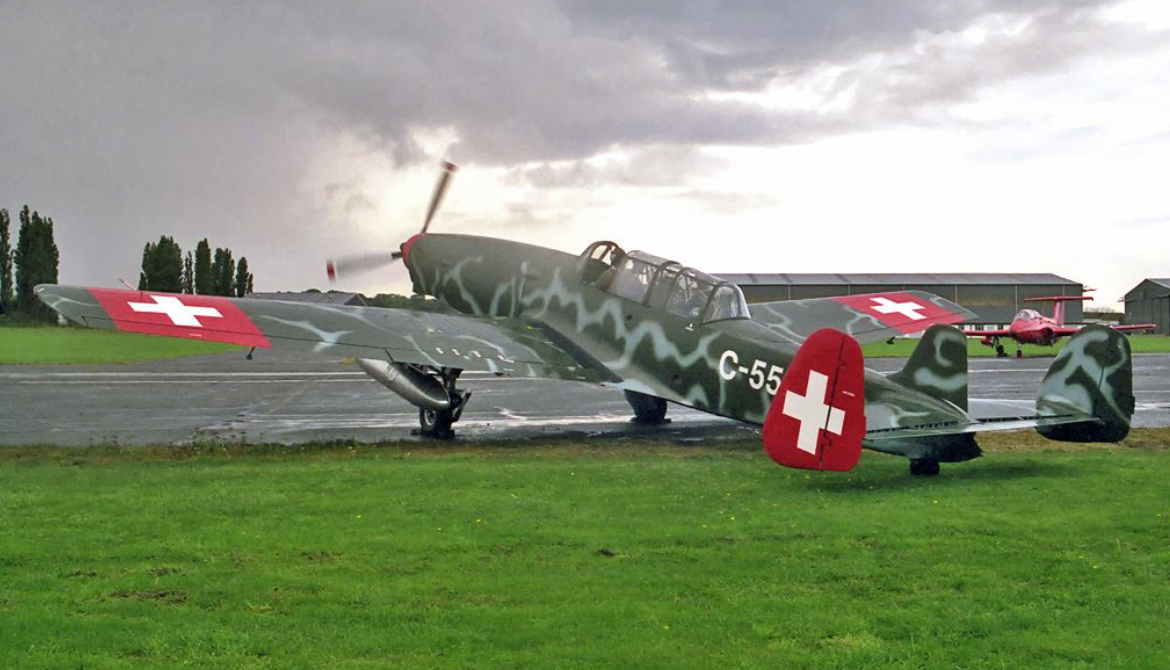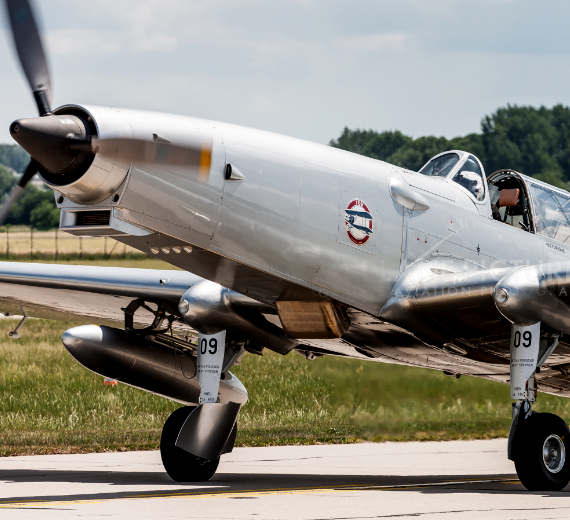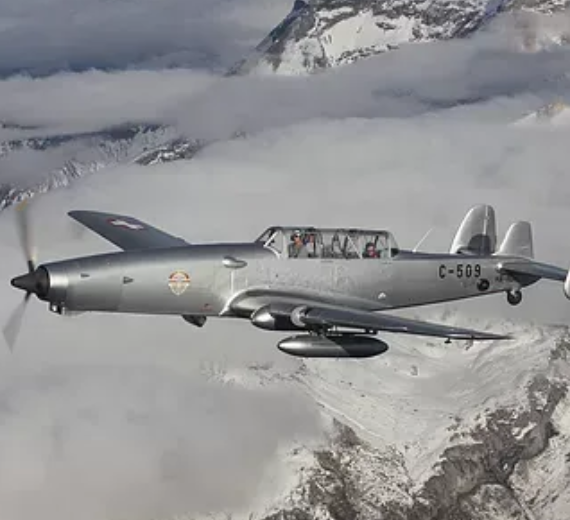F+W C-3605, nicknamed Schlepp
Role Target tug
Manufacturer Farner Werke
First flight 19 August 1968
Introduction 1971
Retired 1987
Primary user Swiss Air Force
Produced 1971–1973
Number built 24
Developed from EKW C-3603
.
History Eidgenössische Konstruktionswerkstätte
F+W C-3605, nicknamed Schlepp

The F+W C-3605, nicknamed Schlepp ("Tug") or "Alpine Anteater", was a target towing aircraft operated by the Swiss Air Force from 1971–1987. The aircraft was developed during the latter half of the 1960s by the Swiss Federal Construction Works (Eidgenoessische Konstruktionswerkstaette) (EKW), renamed Farner Werke (F+W) in 1972, as a conversion of the existing C-3603 ground attack/target towing aircraft. Following a successful prototype conversion in 1968, 23 aircraft were converted between 1971–1973 with 2 still flying in private hands.
In 1967 the Swiss Air Force determined that their C-3603-1 target-towing aircraft still had approximately 10 years of structural life remaining, but that the plane's Hispano-Suiza piston type engines were on the verge of wearing out, with replacements becoming scarce. The C-3603-1 was based on a World War II era ground attack design which had been inspired by the design of the Messerschmitt Bf 109Development


In 1967 the Swiss Air Force determined that their C-3603-1 target-towing aircraft still had approximately 10 years of structural life remaining, but that the plane's Hispano-Suiza piston type engines were on the verge of wearing out, with replacements becoming scarce. The C-3603-1 was based on a World War II era ground attack design which had been inspired by the design of the Messerschmitt Bf 109.
Evaluations of various types of foreign aircraft were conducted to find a replacement; however, it was determined in 1965 that the most economical solution would be to re-engineer the existing aircraft with a modern turboprop engine. Accordingly, work began under the direction of Jean-Pierre Weibel to convert the 102nd C-3603 into the prototype C-3605.
The selected replacement engine was a Lycoming T53 turboprop. This was much lighter than the piston engine of the C-3603 and so the conversion included an extension of the nose of the aircraft by 1.82 metres (6.0 ft) to maintain the center of gravity. The remainder of the aircraft was left essentially unmodified. Early flight testing of the prototype began on 19 August 1968. During testing it was found that a third vertical stabiliser was also required0
KmCeiling
0
KmCombat RANGE
0
Km/hAircraft Speed
0
Max Crew
Photo Gallery
Eidgenössische Konstruktionswerkstätte
F+W C-3605, nicknamed Schlepp


Eidgenössische Konstruktionswerkstätte.
Farner Werke.
F+W C-3605, nicknamed Schlepp
General Info
-
-
- Crew: Two (pilot and winch operator)
- Length: 12.03 m (39 ft 6 in)
- Wingspan: 13.74 m (45 ft 1 in)
- Height: 4.05 m (13 ft 3 in)
- Wing area: 28.70 m2 (308.9 sq ft)
-
Powerplant
-
- Empty weight: 2,634 kg
- Gross weight: 3,300 kg
- Max takeoff weight: 3,716 kg
- Fuel capacity: 510 litres
- Powerplant: 1 × Lycoming T53-L-7 turboprop, 820 kW (1,100 shp)
- Propellers: 3-bladed Hamilton Standard 53C51, 3.05 m (10 ft 0 in) diameter
-
Performance
- Maximum speed: 432 km/h (268 mph, 233 kn) at 3,050 metres (10,010 ft)
- Cruise speed: 420 km/h (260 mph,
- Stall speed: 98 km/h flaps down
- Never exceed speed: 600 km/h
- Range: 980 km (610 mi, 530 nmi) with 10% reserve
- Service ceiling: 10,000 m (33,000 ft)
Armament
- SZW 52 target-towing winch, 2,000 metres (6,600 ft) cable; two underwing hardpoints for supply containers or smoke generators.
- 28V DC electrical system; full blind-flying instrumentation.
Avionics
.
Links to Youtube & Others
The plane operated faithfully in the target towing role, exceeding its expected 10 year structural life. However, by the mid 1980s, the aging aircraft had begun to show signs of airframe fatigue. This led to the decision to retire the type from service in 1987 with the surviving aircraft being sold off and replaced by converted Pilatus PC-9s in the target-towing role
F+W C-3605 Schlepp Target Tug
Flight testing showed that the prototype C-3605 possessed satisfactory flight characteristics, and the conversion of 23 C-3603 aircraft to C-3605 standard began.
Youtube Link
The aircraft were delivered by F+W between 1971 and January 1973

